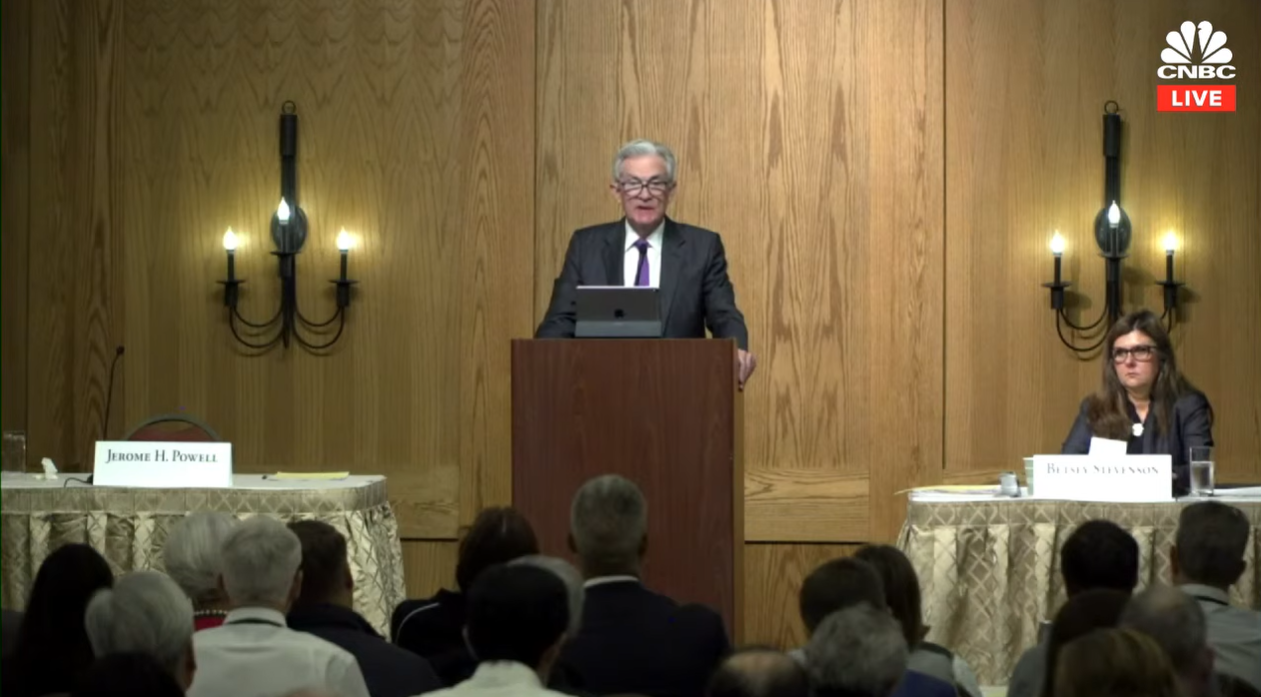The highly anticipated statements that investors worldwide closely follow have just begun. Federal Reserve Chairman is speaking as of 17:05. The Jackson Hole meeting two years ago in 2021 had a completely different atmosphere. Powell’s statements at that time reassured the markets, but he seemed unaware of the challenging fight against inflation in the following years.
Federal Reserve Chairman’s Statements
Federal Reserve Chairman Powell triggered major sell-offs in cryptocurrencies with his statements last year. His previous statements also reflected excessive optimism. The statements he will make today may provide us with a clearer perspective on the medium and long-term outlook. When will interest rates decrease? Is the fight against inflation coming to an end? Investors hope to find answers to these and other questions in this speech.

So, what did Powell say?
- If appropriate, we are ready to raise interest rates further.
- Monetary policy will remain tight until inflation is sustainably reduced to 2%. We will be cautious when making interest rate decisions. The interest rate decision will be based on future data.
- Positive data is just the beginning of establishing confidence in inflation. We need more progress in non-housing services inflation. Rental prices indicate a slowdown in housing inflation, and we are monitoring it.
He also stated the following;
“On a 12-month basis, US total or ‘headline’ PCE (personal consumption expenditures) inflation peaked at 7% in June 2022 and has declined to 3.3% as of July, roughly following global trends. The effects of Russia’s war on Ukraine have been the main driving force behind changes in headline inflation worldwide since the beginning of 2022. Headline inflation is what households and businesses experience most directly, so this decline is very good news. However, food and energy prices are influenced by volatile global factors and can provide misleading signals about the direction of inflation. In my remaining comments, I will focus on core PCE inflation, which does not include food and energy components.”
He reiterated his statements about the timing of the impact;
“Similar dynamics apply to core goods inflation as well. The effects of monetary constraints are expected to become more pronounced over time. Core goods prices have fallen in the past two months, but on a 12-month basis, core goods inflation is well above pre-pandemic levels. Progress is needed, and restrictive monetary policy is necessary to achieve this progress. The effects of monetary policy in the housing sector, which is highly sensitive to interest rates, became evident shortly after takeoff. Mortgage rates have doubled throughout 2022, leading to a decline in housing starts and sales, and a decrease in the increase in housing prices. Rental market growth peaked quickly and then steadily declined.”
What does he think about the overall outlook?
“Turning to the outlook, while the resolution of distortions related to the pandemic will continue to exert some downward pressure on inflation, restrictive monetary policy is likely to play an increasingly important role. Achieving sustainable inflation at 2% is expected to require a period of economic growth below trend, as well as some softening in labor market conditions.”
In his concluding remarks, he said;
“As is often the case, we navigate by looking at the stars under a cloudy sky. In such situations, issues related to risk management are crucial. In future meetings, we will evaluate our progress based on the entirety of the data and evolving outlook and risks. Based on this assessment, we will proceed carefully in deciding whether to further tighten or instead keep the policy rate steady and await more data. Restoring price stability is essential to achieve both sides of our dual mandate. We will need price stability to ensure the continuity of strong labor market conditions that will benefit everyone.”
Excessively cautious statements do not seem to favor risk markets, including cryptocurrencies.


 Türkçe
Türkçe Español
Español









